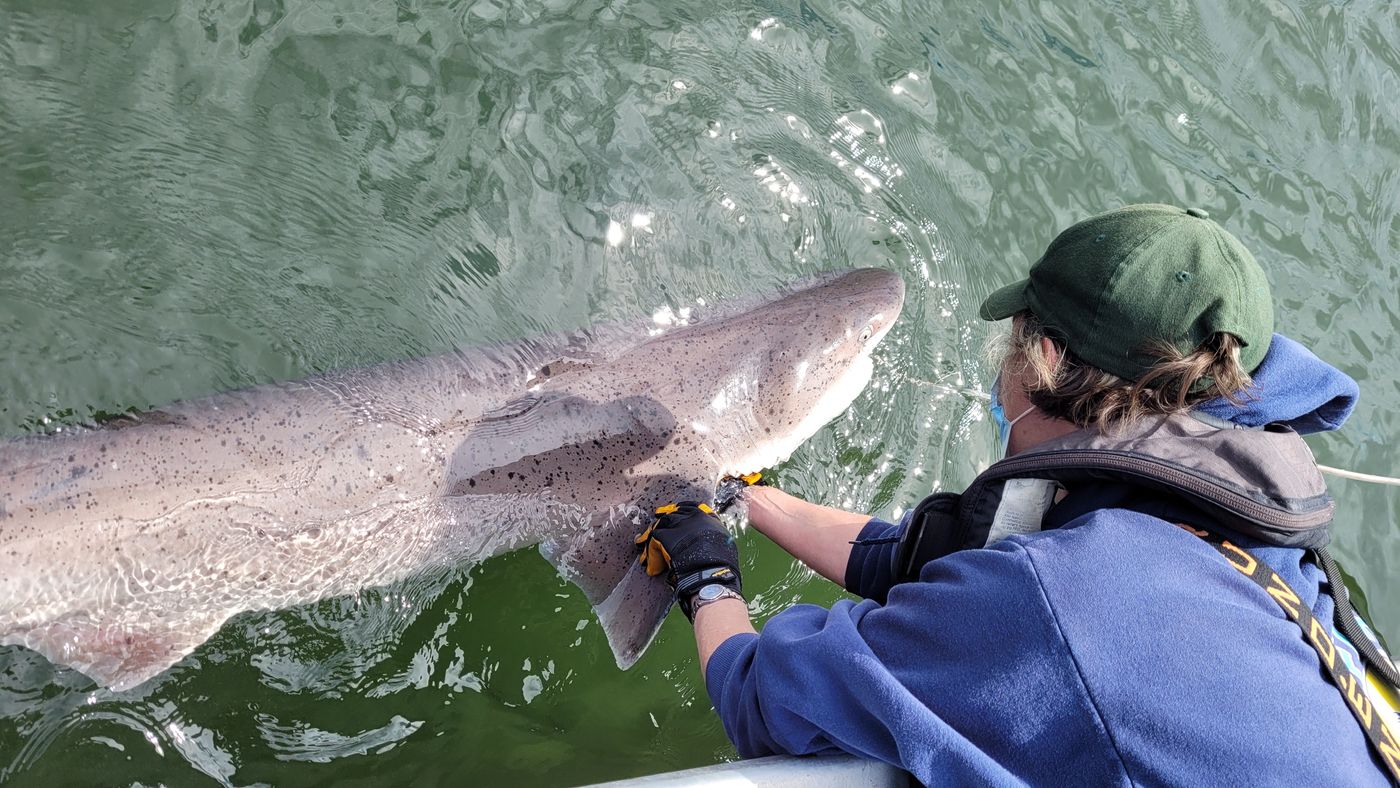Two Shark Species Confirmed in Puget Sound for the First Time
For the first time, researchers have documented that the broadnose sevengill shark, and the soupfin shark, which is a critically endangered species, are present in Puget Sound, which is in the southern part of the Salish Sea in the North Pacific. Cities including Seattle, Tacoma, and Bellevue are located on the shores of the sound. The presence of these animals could indicate that the area, which is vital to many groups and cultures, is changing. The findings have been reported in two papers in Frontiers in Marine Science.
While the Salish Sea may be a body of water that is 6,500 square miles in size, South Puget Sound is developed and urbanized. Yet the broadnose sevengill now swims there. This apex predator species is named for its unusually high number of gill slits compared to other shark species. They can grow to be almost ten feet in size. Broadnose sevengill sharks consume a lot of different prey including marine mammals, crustaceans, and fish including other sharks.
"Understanding the sevengill presence in this new habitat is crucial for understanding the food webs of the Salish Sea, and it highlights the need for continued monitoring and research, including their relationship with other species of conservation concern, such as salmon," said a first study author of one of the publications, graduate student Jessica Schulte of Oregon State University (OSU).
Broadnose sevengill sharks like temperate waters around the world and can usually be found off the West coast of North America anywhere from southern Alaska to Baja California. Before 2021, only a single confirmed sighting of a sevengill shark had occurred in the Salish Sea. Anecdotal reports of the shark's presence started in 2021.
In this study, the researchers captured nine sevengill sharks that were located over 100 miles (160km) from the range they've been known for. Eight of the sharks were males under seven feet long (2m) and one female was about four and a half feet long (1.4m).
The soupfin shark, unfortunately named as an ingredient in shark fin soup, can grow to be six and a half feet long. The soupfin also likes temperate waters around the world and is an apex predator that consumes fish and cephalopods. These sharks are known to migrate as many as 1,000 miles. One soupfin shark was captured for this study. It was a male just over 5 feet long (1.5m).
"Soupfin sharks were relentlessly exploited during the 1930s and 1940s, including for their livers, which are rich in vitamin A," said a first study author and OSU graduate student Ethan Personius. "Despite lower fishing pressure the species has not been able to recover and is currently under consideration for federal protection under the Endangered Species Act."
Personius noted that significant shifts in the abundance and diversity of species have occurred in the Salish Sea along with influences like industrialization and degradation of the natural environment. The sharks may now be appearing in the area because of climate change and the presence of certain prey species.
There was a major marine heat wave in the area in 2014 and 2015, after which many anchovies appeared on the scene. Soupfins are anchovy predators.
Sources: Oregon State University, Schulte et al Frontiers in Marine Science 2024, Personius et al Frontiers in Marine Science 2024









